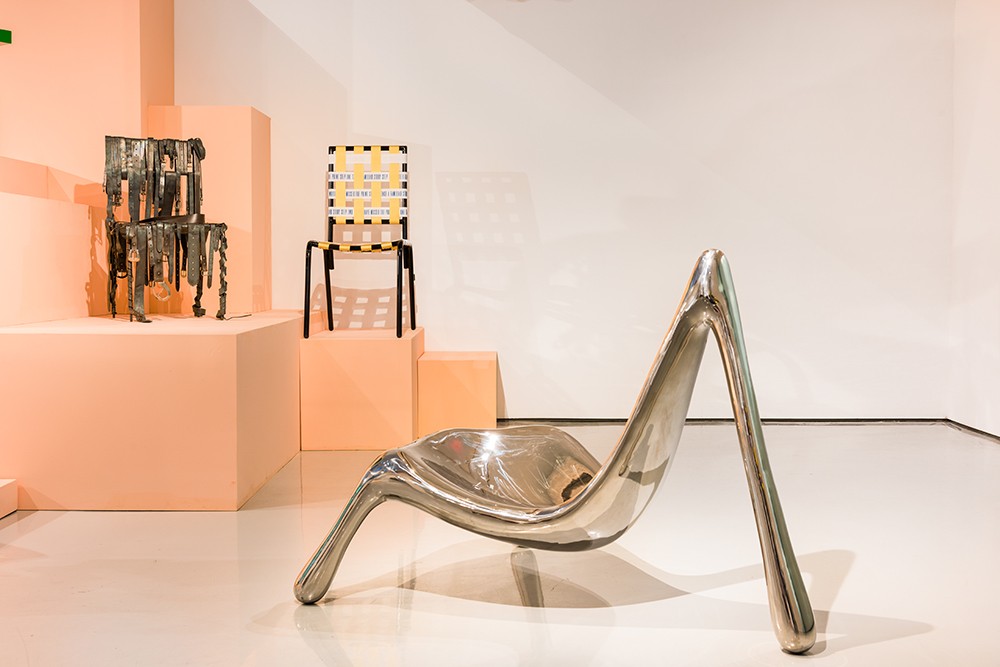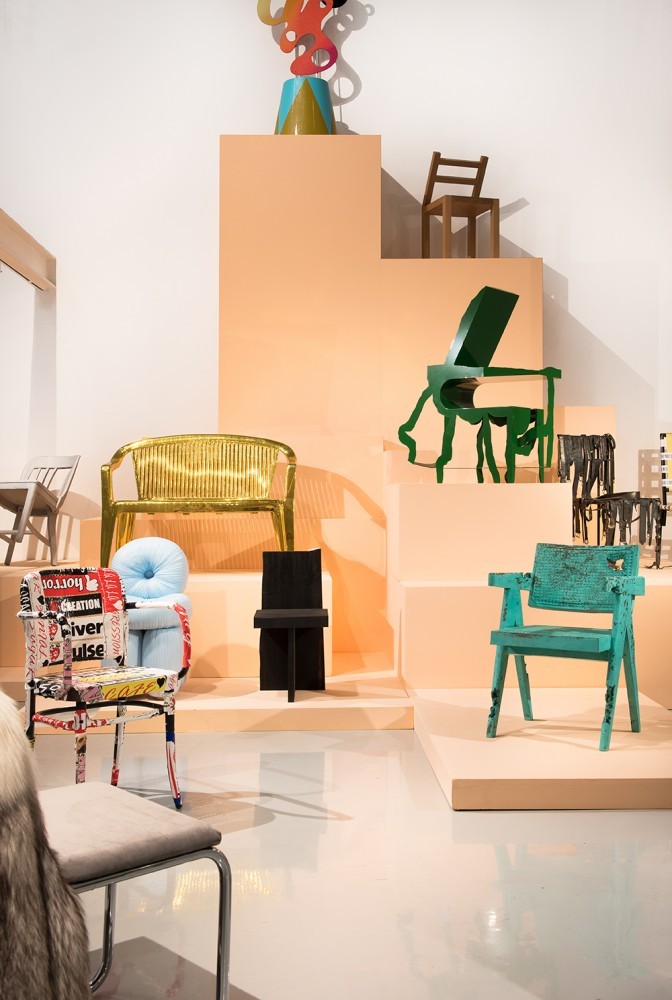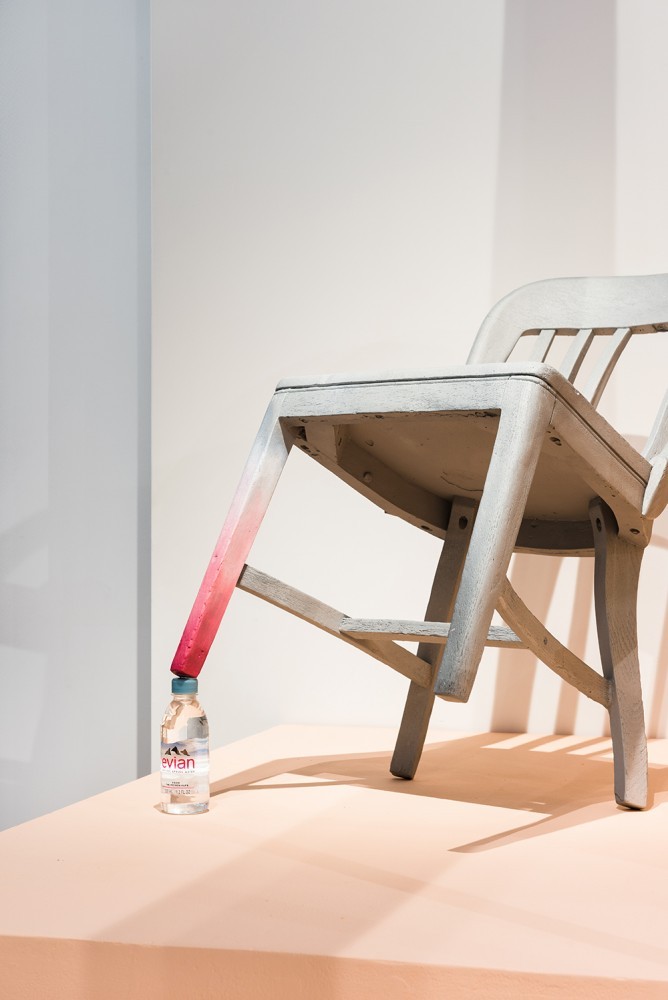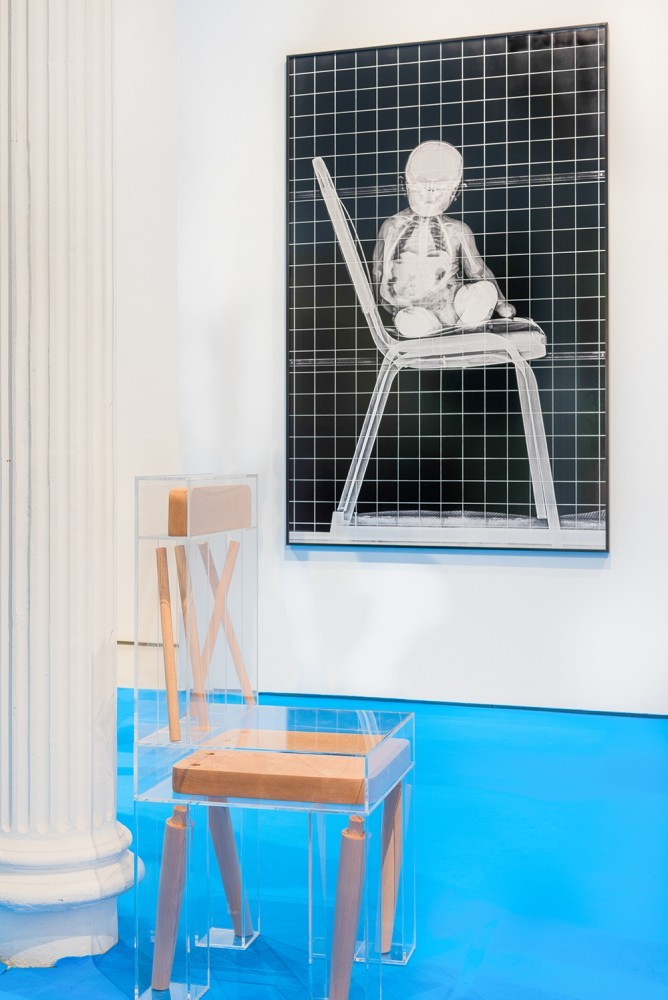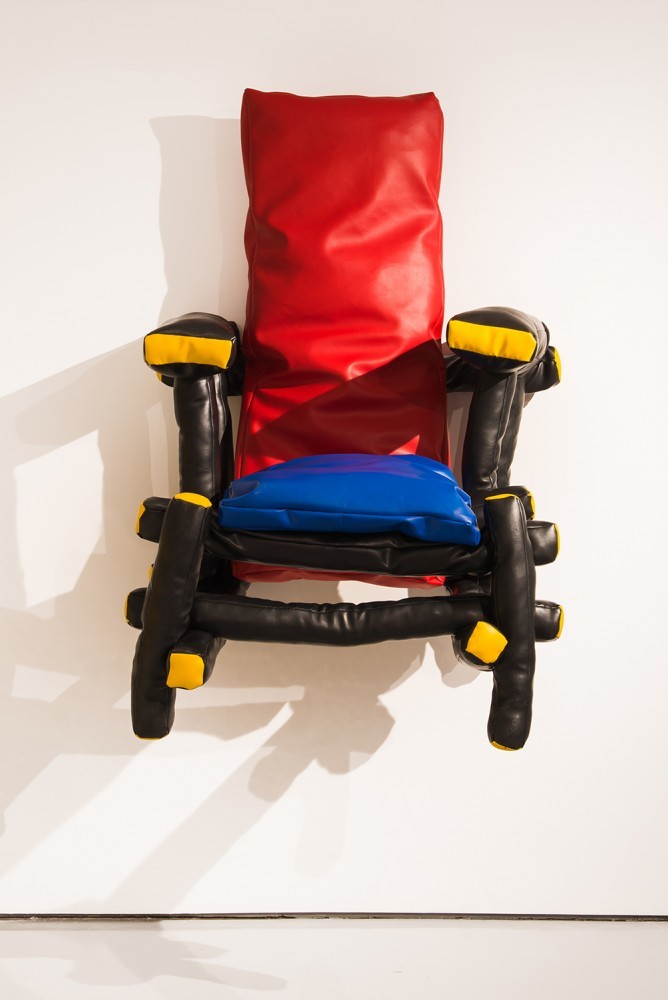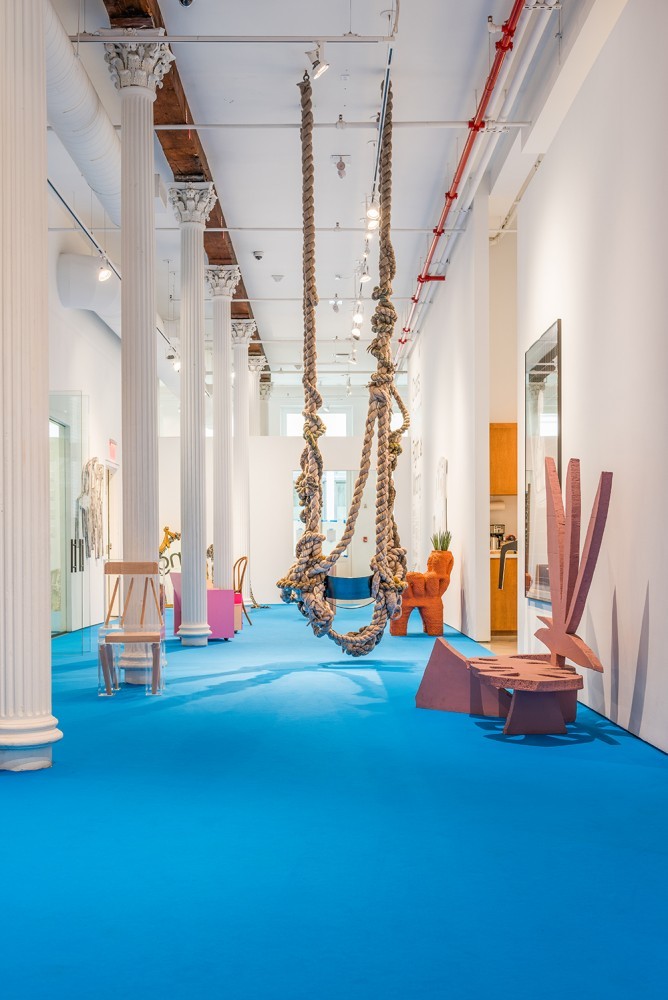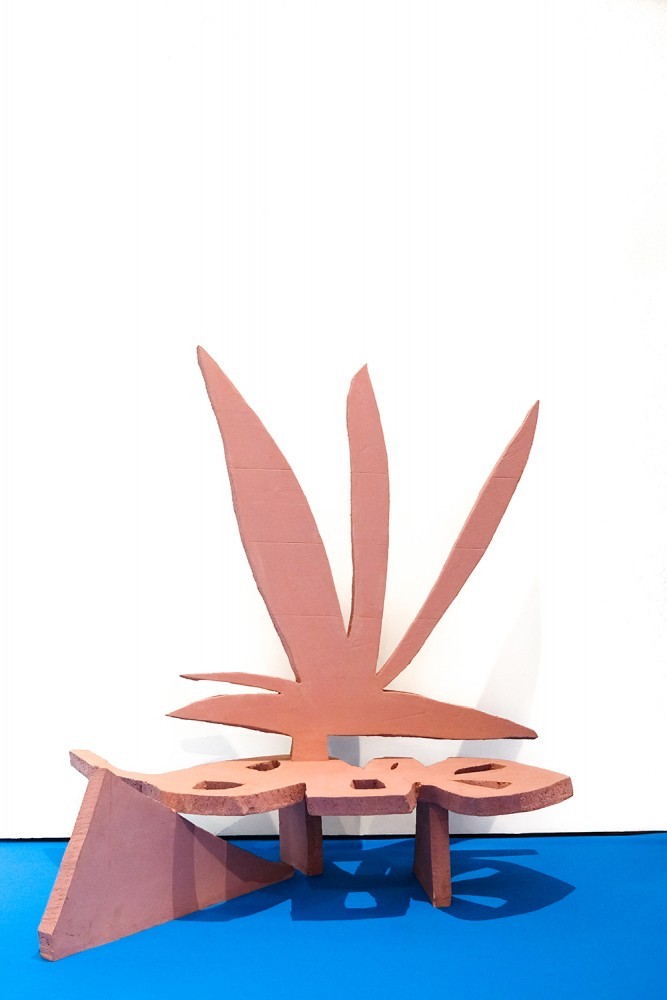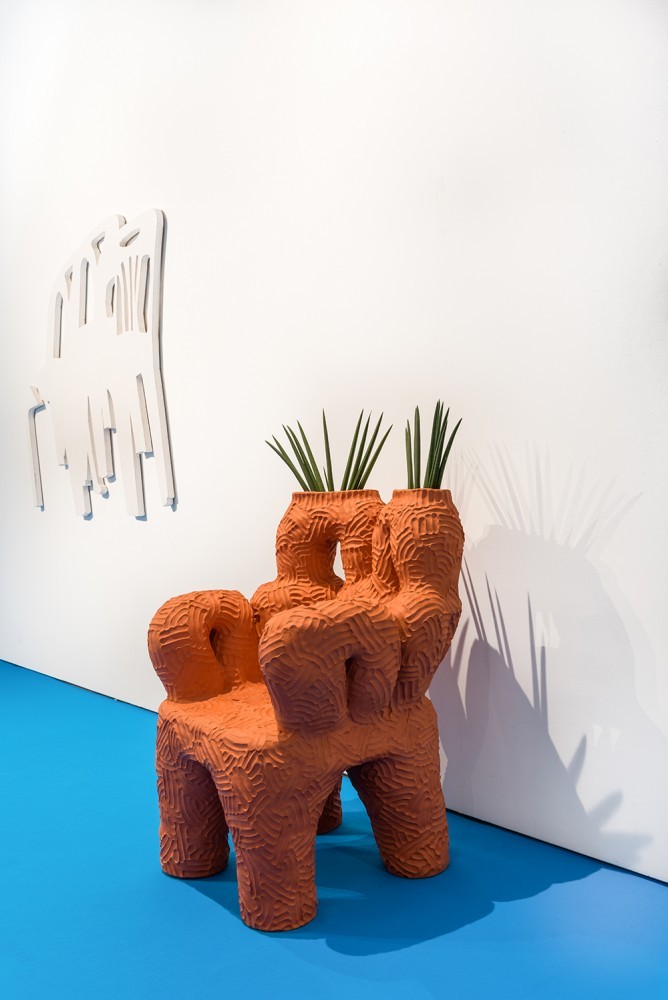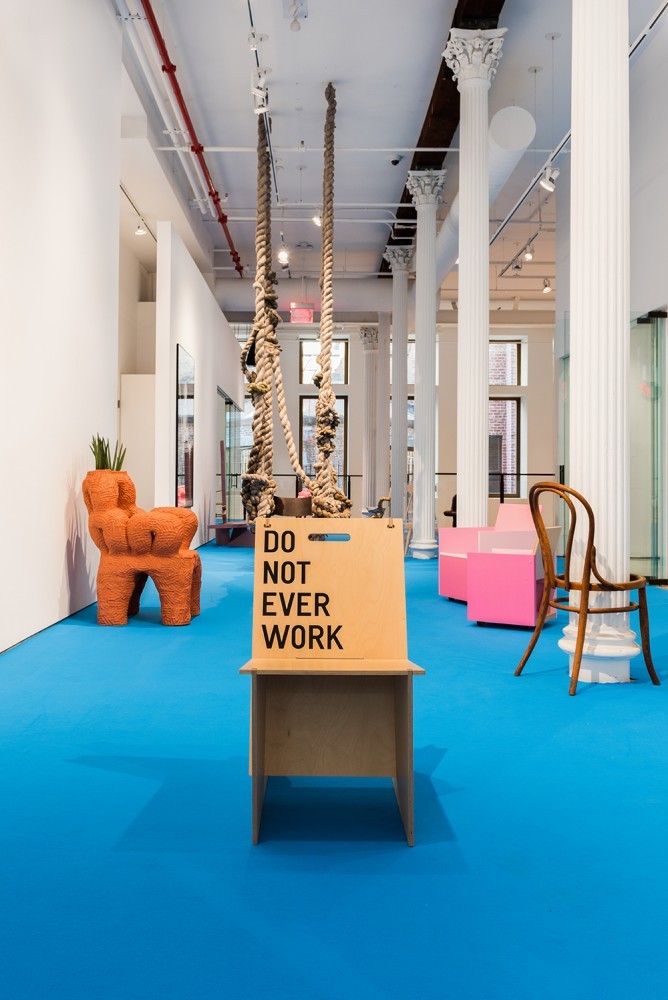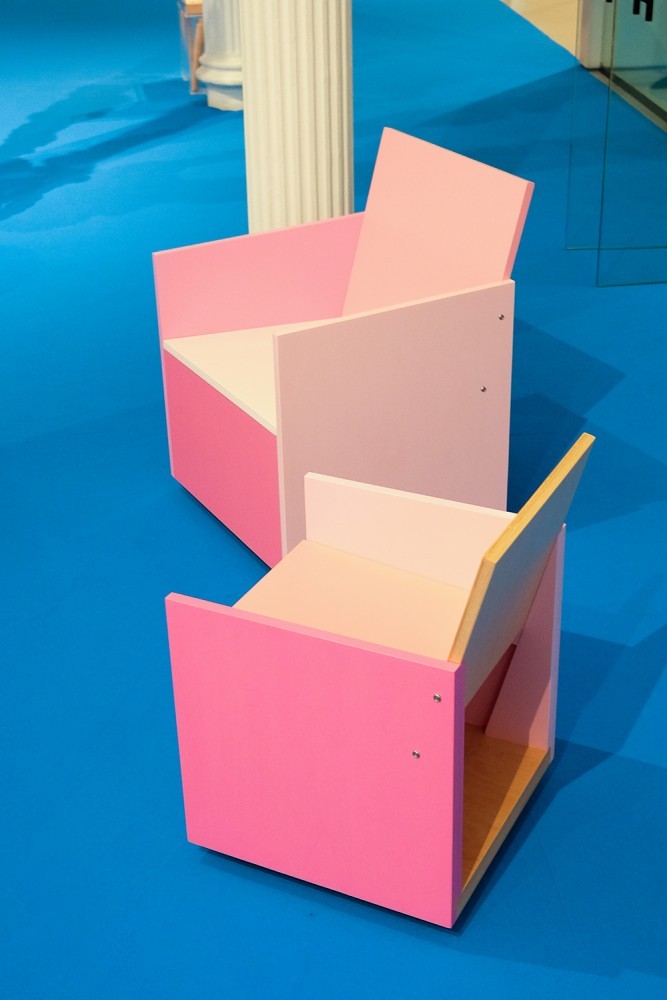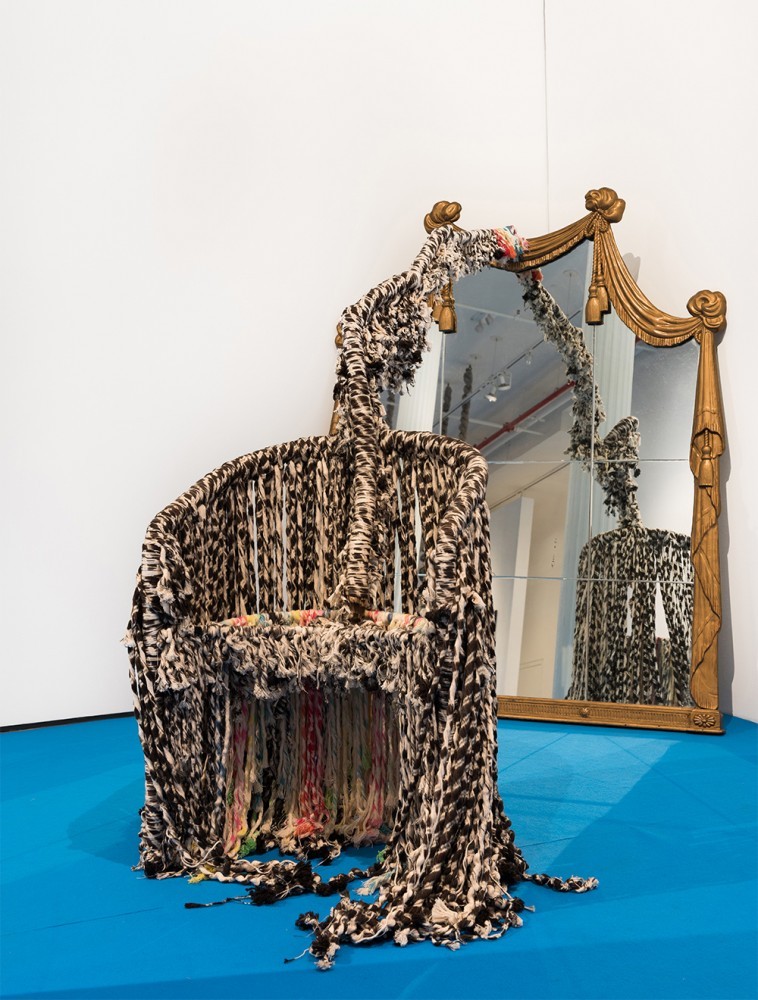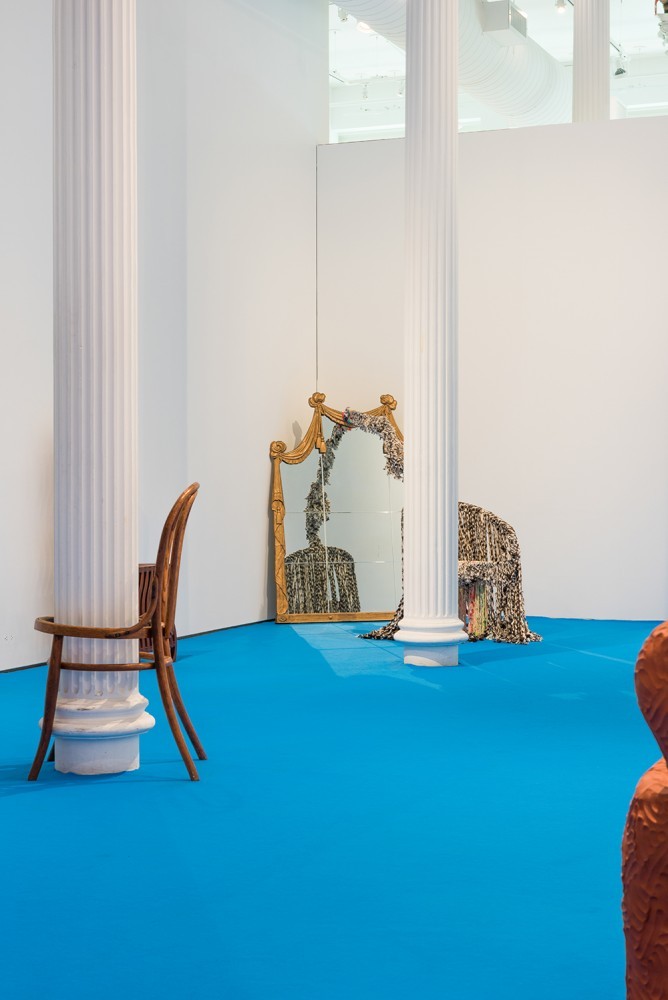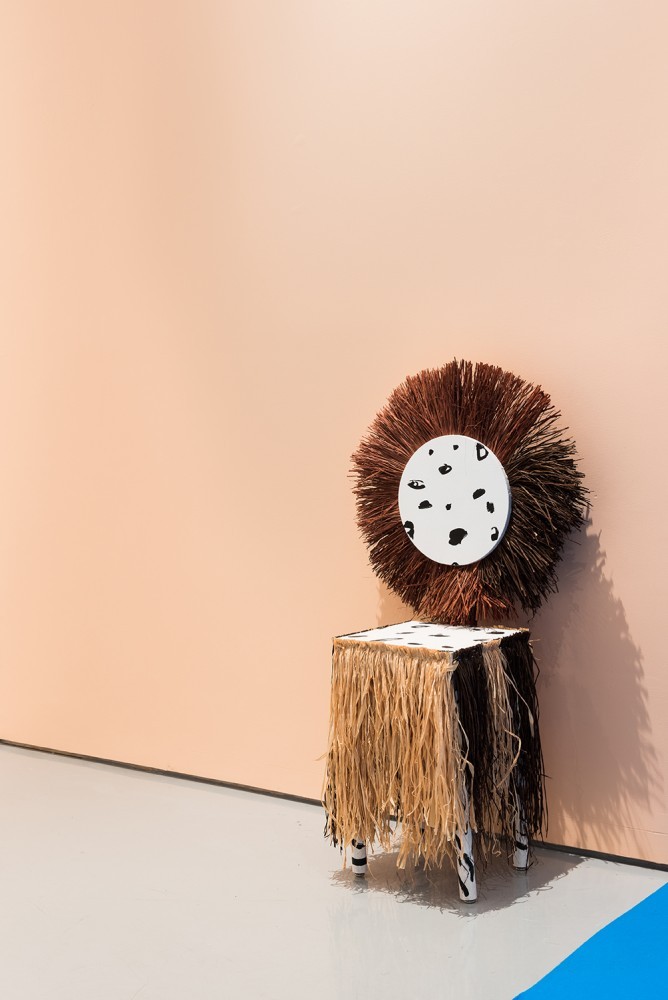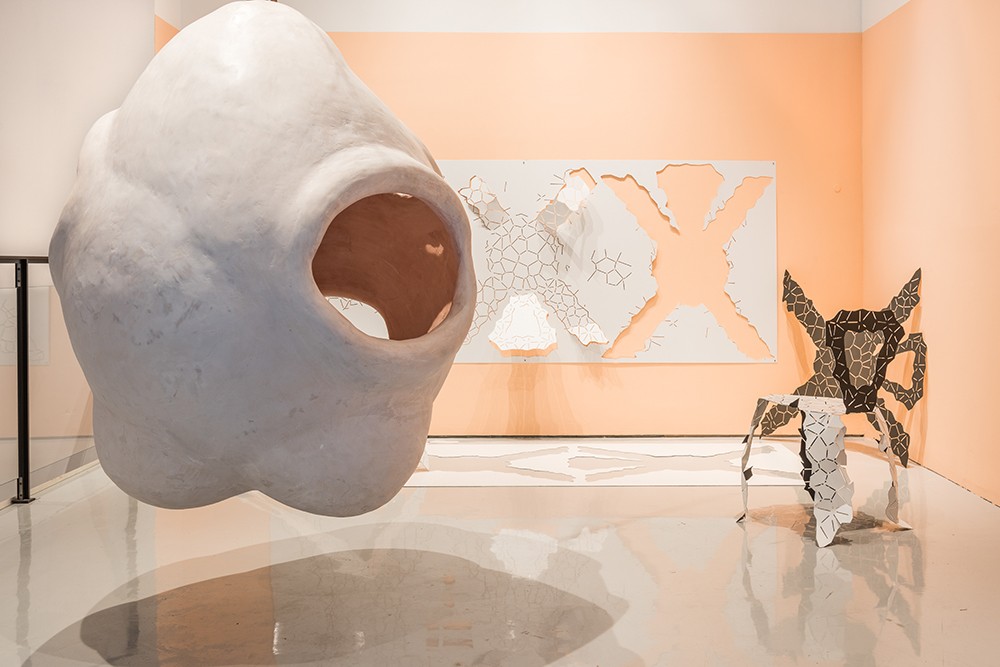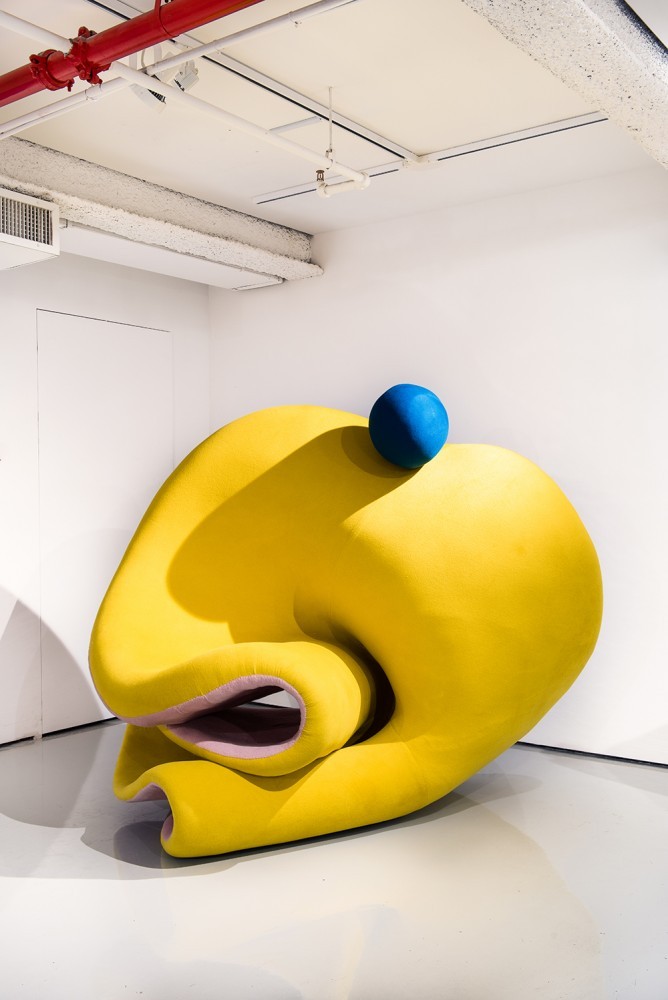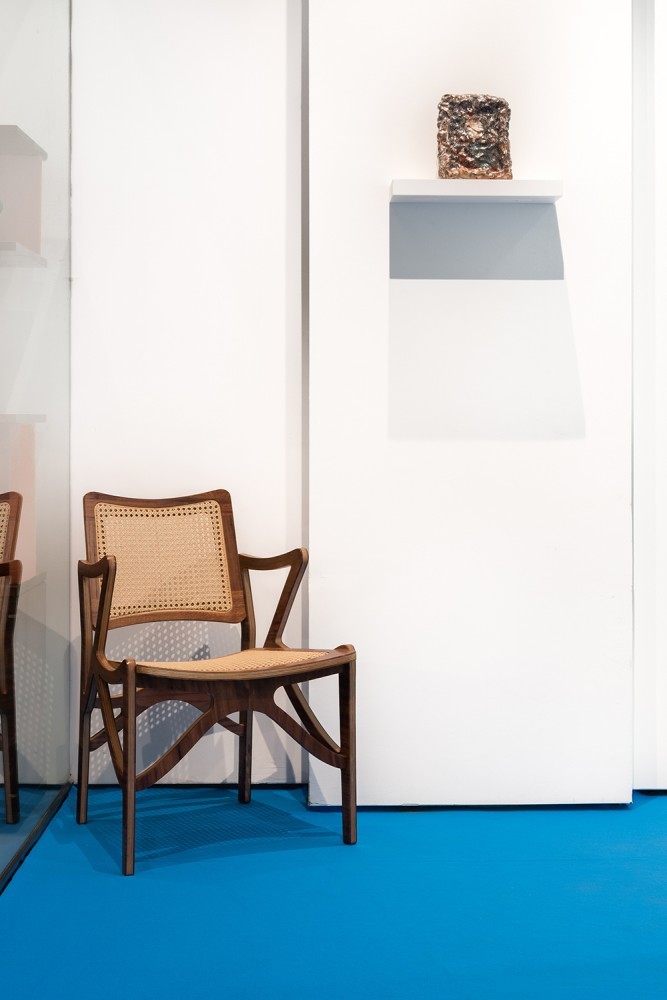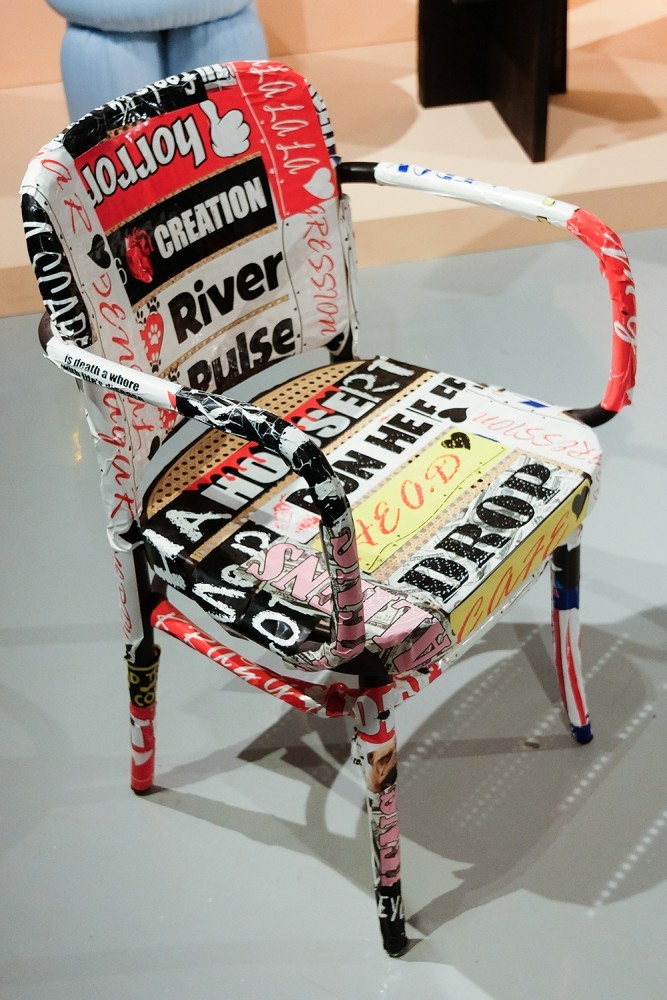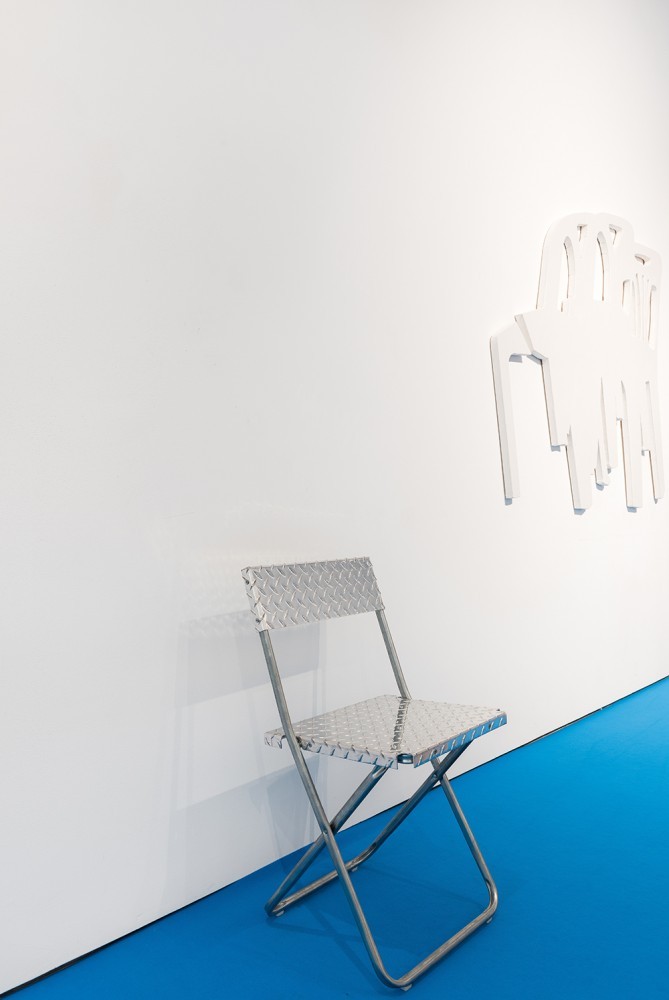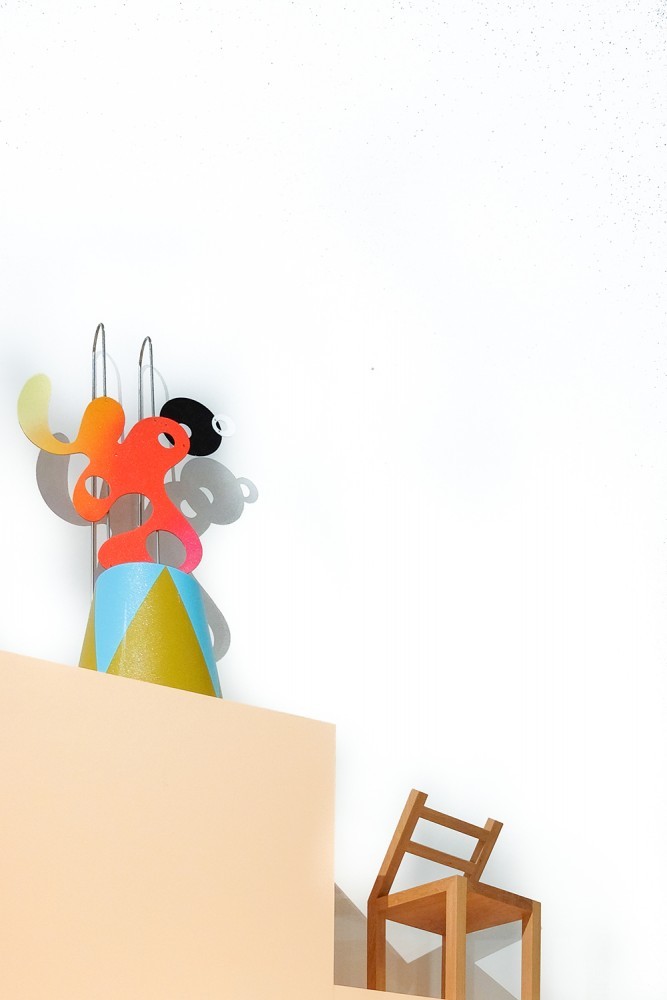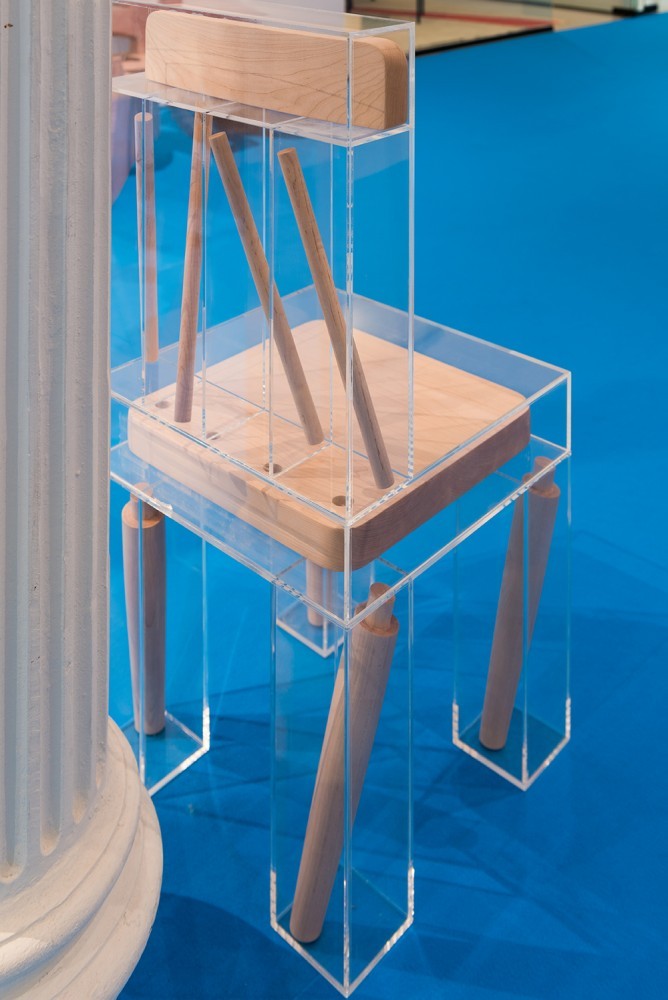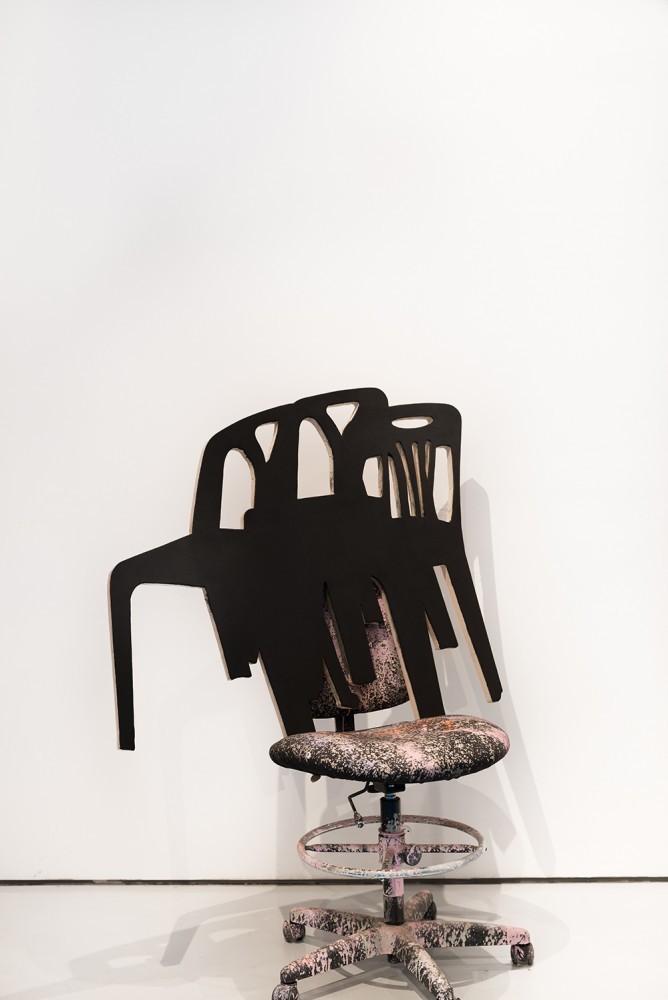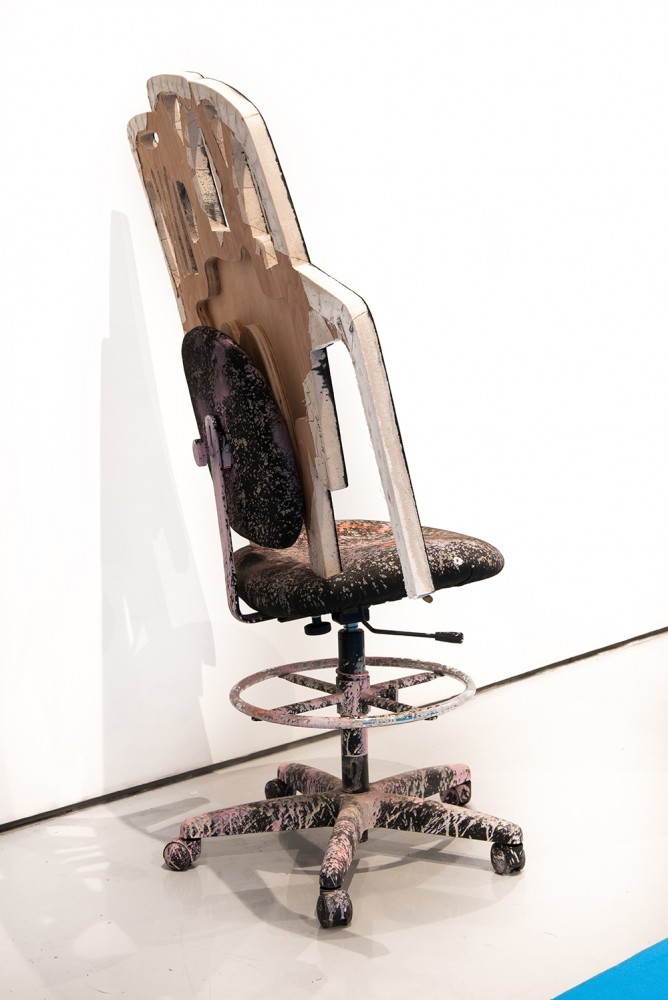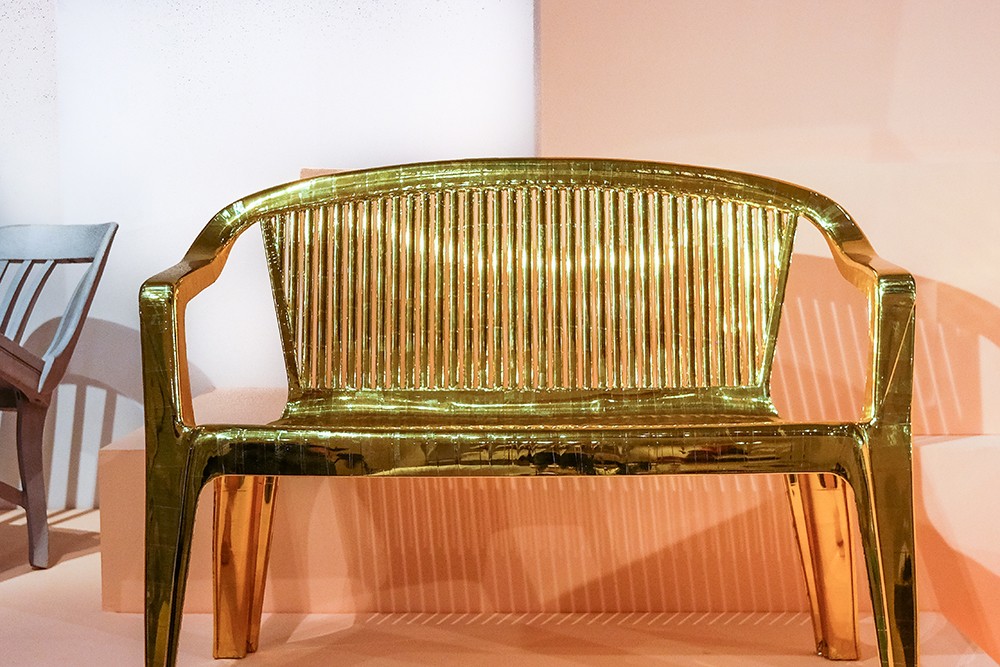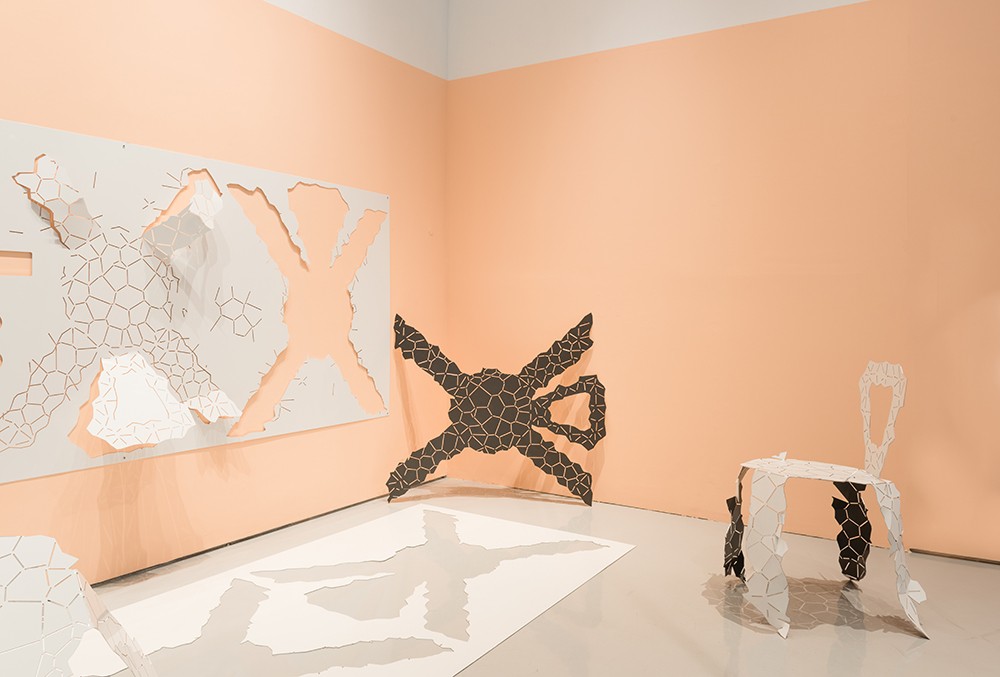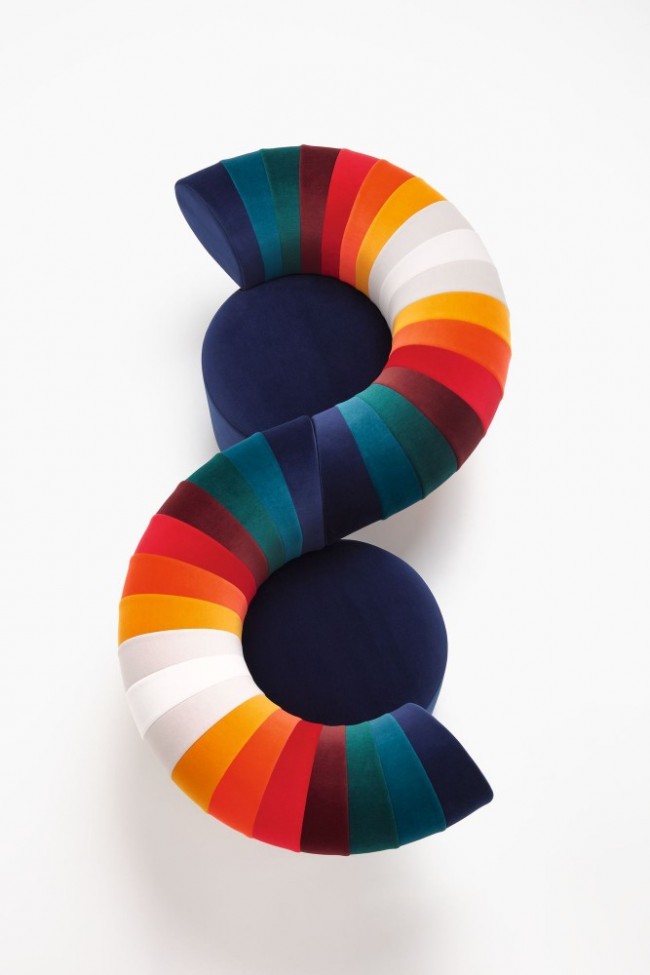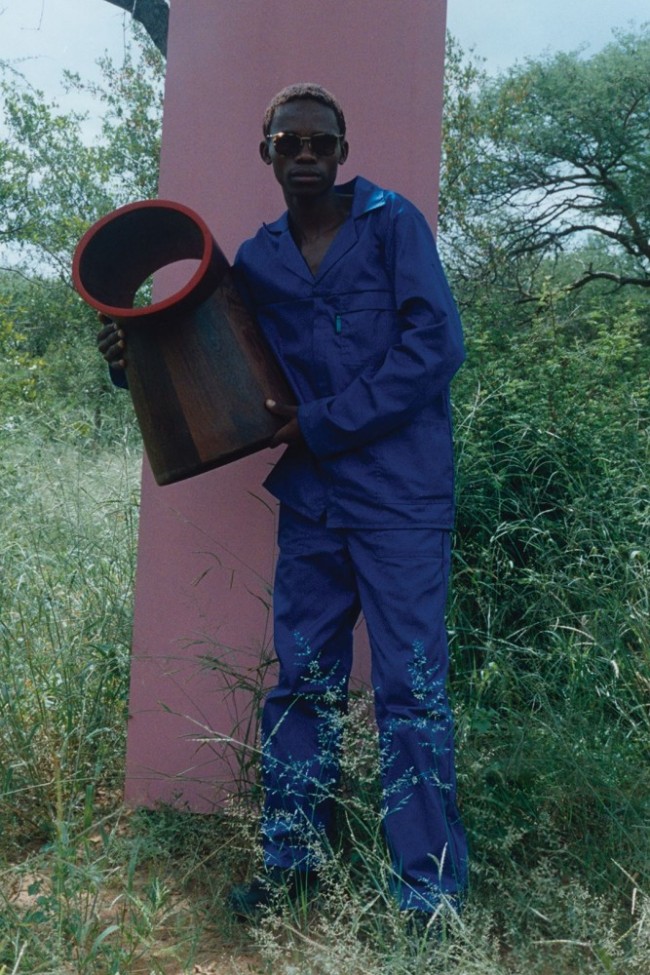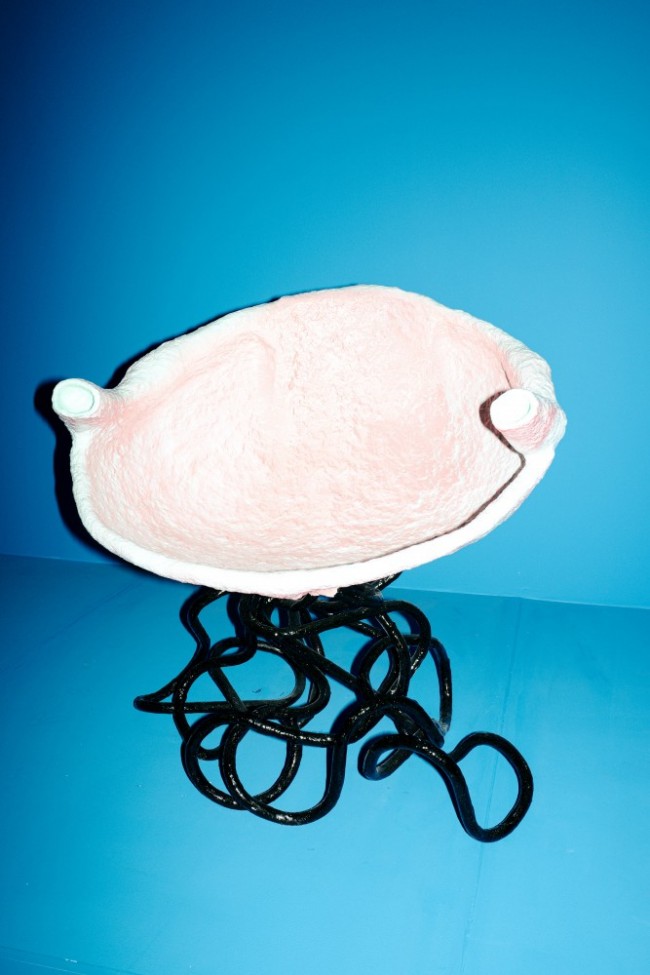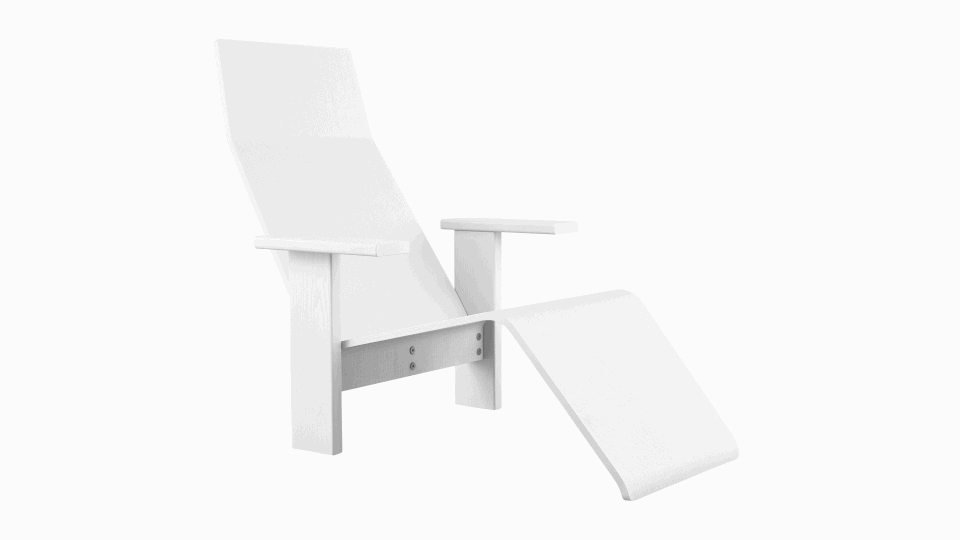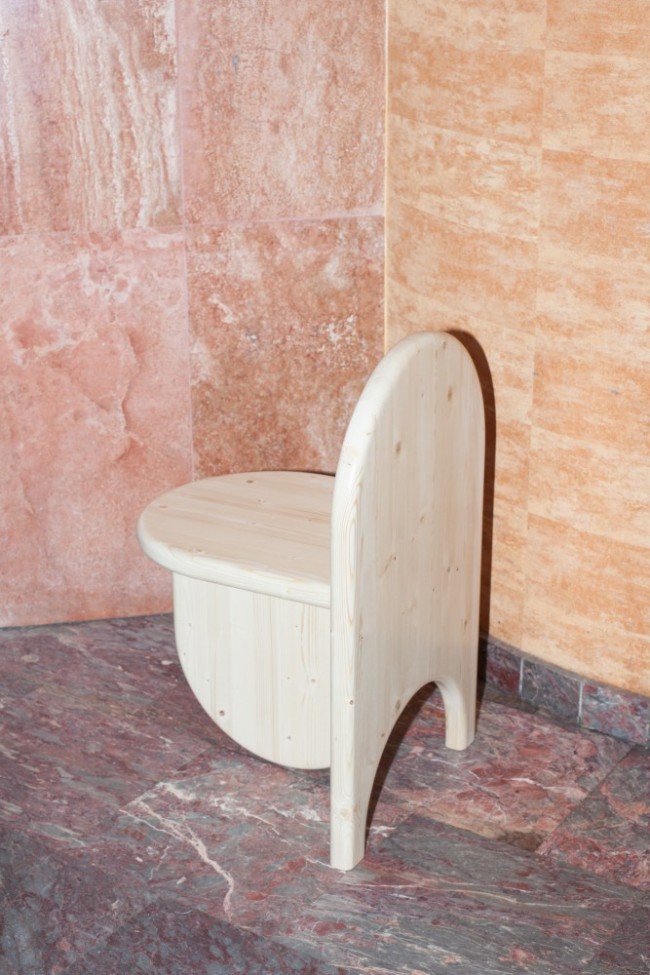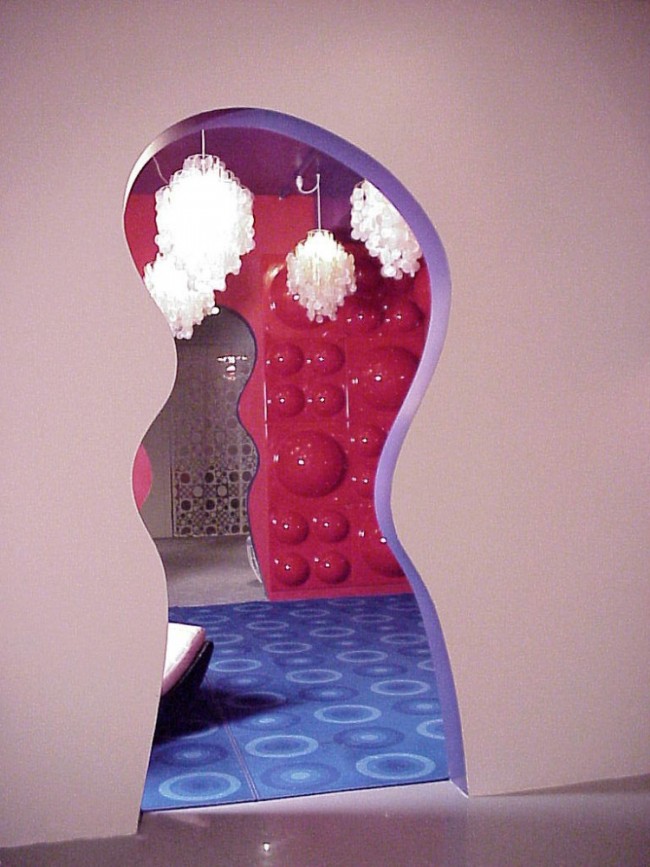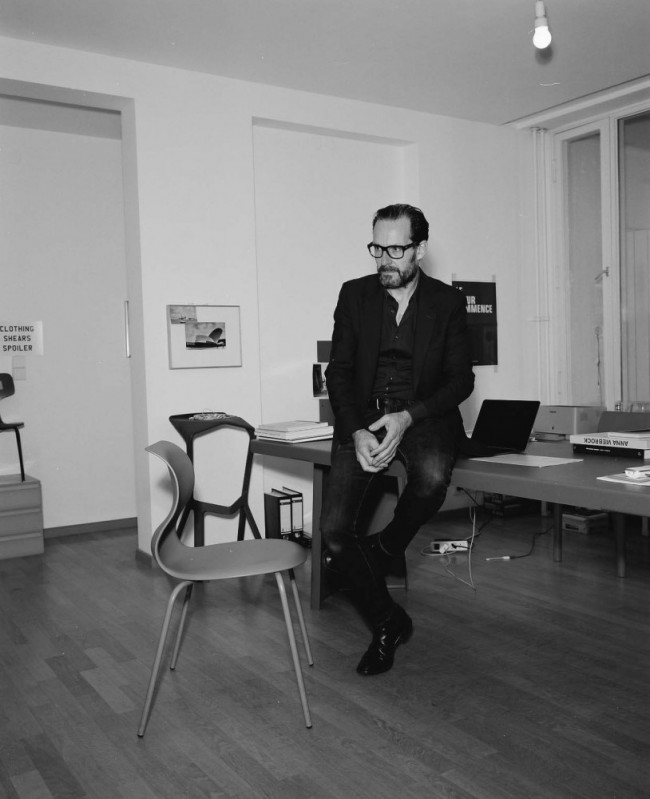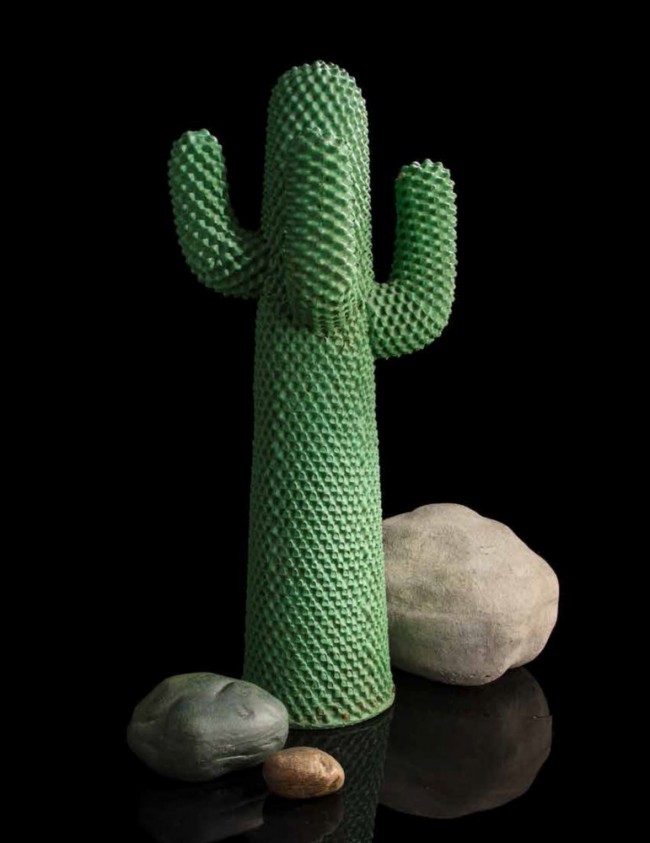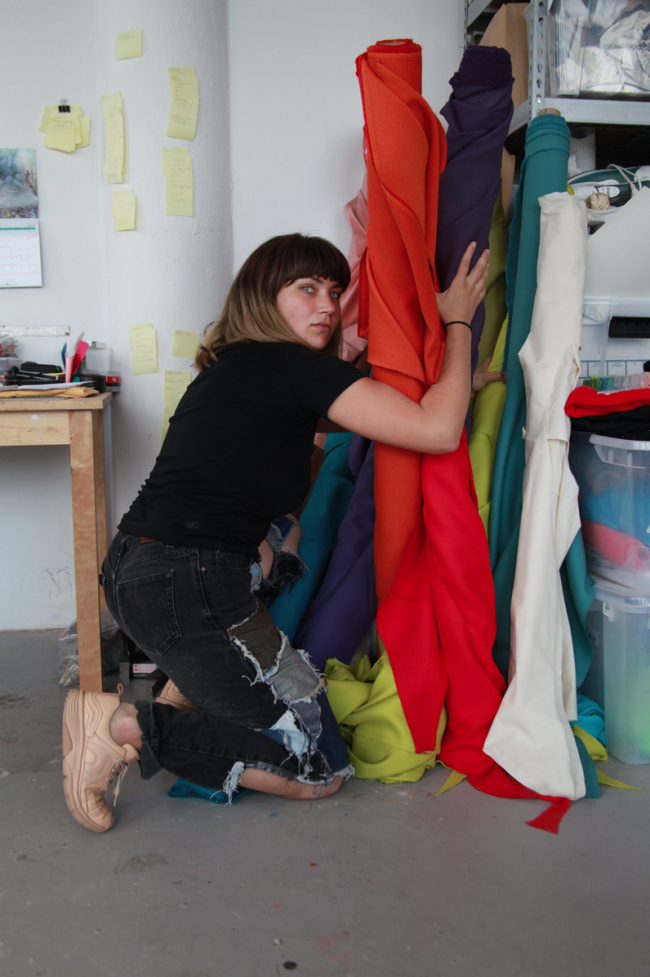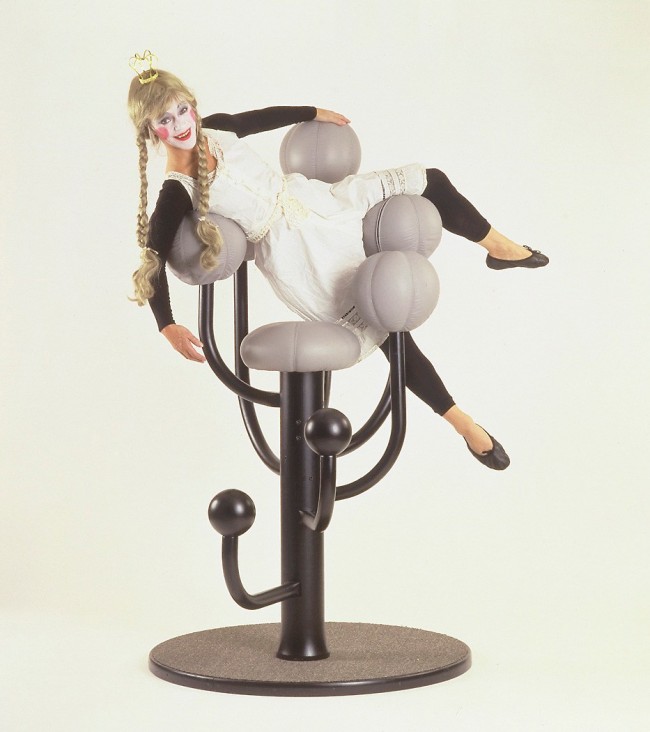ARE CHAIRS ART? A DESIGN DEBUTANTE DISCOVERS THE VERSATILITY OF SEATING
Chairs as art. My only real point of reference is Rachel Whiteread. Her untitled work from the mid-90s — casts of the negative space underneath chairs — is known even to an art ingenue like me. Lined up, staggered, in benumbed colors, Whiteread’s sculptures look something like an ossified Yeezy fashion show... just with more geometry. They’re engaging. They force you to squint and imagine what the would-be chair above it looks like. The absence of the chair is what makes the piece, so I guess that’s a no go. Beyoncé! Surely, the Queen Bey seated on the cover of Vogue’s 2018 September Issue, photographed by Tyler Mitchell counts. What better example is there of chairs in art than the shoot that captured pop culture’s collective eye? But then, I guess the real art in that shot is everything but the chair. It’s the lighting, the nimbly arranged floral headpiece, Beyoncé’s gentle regality. The chair is just a prop. Madonna, closing the “Blond Ambition” tour? I mean, what a spectacle! The acrobatics! The empowering lyrics! The bowler hat! Okay, so those bentwood chairs are really a facilitator in that performance piece as well. They’re chairs, after all. They’re functional, quite literally there to support. So what room do chairs give for artistry?
Chairs Beyond Right & Wrong, a new exhibition curated by the blade-sharp and seemingly boundless Raquel Cayre for the design gallery R&Company, poses this very question. Just through the front door, right past two eagle-eyed gallerinas, you’ll find a pair of muted pastel chairs that could easily be mistaken for some kind of waiting area. Wooden at the base and dexterously woven into one body by the wicker at their corners, it is in fact a piece by one of the wunderkinds of post-Internet art, Bunny Rogers. And just as unassuming in this faux waiting nook is a lighting fixture by the Alaska-based Italian artist Paola Pivi. Her chandelier (I am a cool strange light ball, too, 2010) brings together a cluster of Vitra miniatures chairs — from the Bocca Lip Sofa to Marcel Breuer’s Wassily chair — forming a sphere around a hanging bulb. The breeze from the door opening and closing sends the piece into motion, giving, perhaps unintentionally, a rotating miniature retrospective of seating and its myriad possibilities.
-

Chairs Beyond Right or Wrong (2019), R&Company, curated by Raquel Cayre: installation view.
-

Foreground: Cory Arcangel, Til hele (2019): Galvanized steel and diamond plate aluminum. Background: Nate Lowman, Broke Dick Dog Chair (2019): Oil on canvas.
-
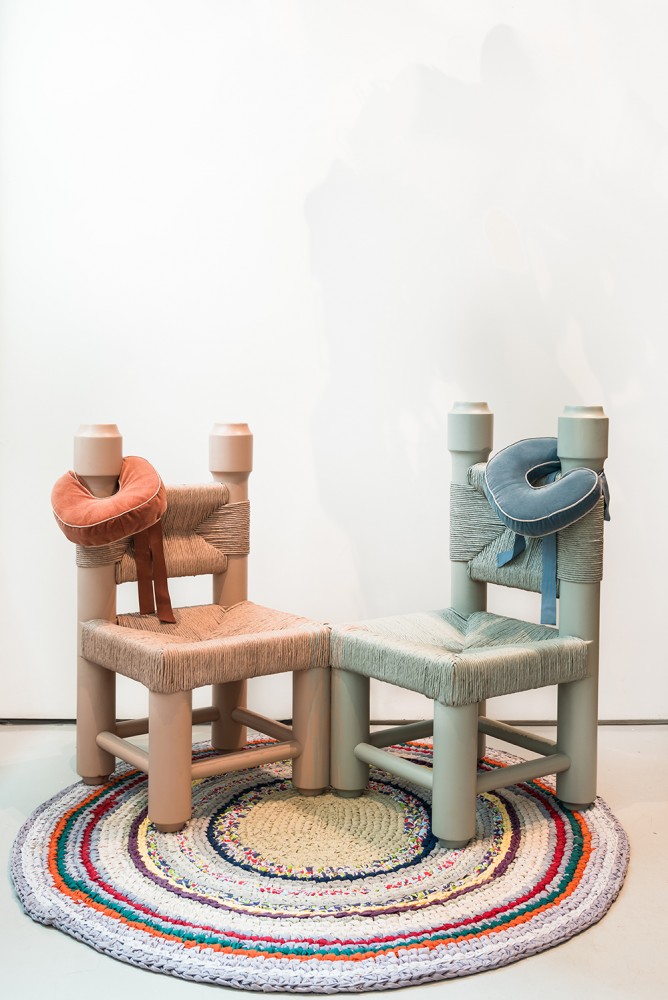
Bunny Rogers, Chairs (after Brigid Mason) (2014): Rush-seated interwoven wood chairs; Comedy Tragedy Horseshoe Neck Pillows: Upholstery fabric,
grosgrain ribbon, piping, stuffing; Flag Rag Rug: Cotton sheets, fabric dye. -

Chairs Beyond Right or Wrong (2019), R&Company, curated by Raquel Cayre: installation view.
Unexpected moments like this continue throughout the gallery. Just past a galvanized steel piece by Cory Arcangel (Til hele, 2019), uncharacteristically tangible given his net art notoriety, sits a gem by Mario Navarro commissioned especially for this exhibition: the bentwood chair — sans cushion and seating support — wrapped around one of the gallery’s load-bearing columns. The rope sling by Dana Barnes (Eyrie, 2019) would feel at home on a Madonna stage being used in some sort of aerial routine. Here it has been made arresting with different implementation. Just a few paces into the gallery, it hangs literally left of center and seems to be a subtle precursor, letting you know that the mindfully curated world you’re about to journey through will be familiar but oh so very different.
Creating an interaction between the works and the space was important to Cayre when curating the show. The design of the space, which she worked on with R&Company director Evan Snyderman, keenly mirrors the arrangement. The niche in the back right corner has been separated by contrasting colors on the floor which signal a change in orientation. “I wanted to have a location that’s not a white box in Chelsea. That works for some other people but not for me,” she says.
In designing this show Cayre’s soul ambition was to “dissect the chair and peel off all the layers.” This ambition never left the front of her mind as she searched for pieces that spoke to her and it became the mandate for every artist who was commissioned to make new work. As I made my way through the gallery I was struck by how each artist really did idiosyncratically deconstruct the typology. And by how the arrangement and flow of the show itself continually upped the ante and filtered seating through a new lens. No Kanye-esque presentation to make me squint and use my imagination, no gentle regality to melt over me, no acrobatics or top hats (though, how cool would that have been?), and yet I found delight and intrigue at every turn. Cayre’s hand is clearly on the wheel but the artists decide the destination. Each took took the directive in stride and in stripping chairs down they’ve elevated them!
On the gallery’s lower level, the seminal Hoffman side chair wrapped in irreverent bumper stickers (“racist” intentionally written in delicate script with a doodle of a heart next to it, “naked woman” written in bold letters next to a frustrated fully clothed woman ripping her hair out, the face of an alien next to “I asked you to leave”) by Jordan Wolfson offers a meditation on apathy and desensitization. The crassness, delivered with a wink and a tongue firmly in cheek, is certainly thoughtful and somehow turns to charm when set next to the more elegant and conventional work of steel and upholstery draped with opulent vintage fur by UK-based artist Nicole Wermers. The exhibition’s only 20th-century work, a 1974 Ettore Sottsass lounge chair lined in carpet, is set in the center of the floor just across from a bronze and mirror work by Tom Burr. An everwarm and loungeable design staple with a minimal and cool-to-the-touch contemporary piece as its neighbor. Juxtapositions like this can be found at every turn, feeling harmonious rather than jarring.
-

Jordan Wolfson, Untitled (2018): Hoffmann chair, bumper stickers.
-

Nicole Wermers, Untitled Chair - FXG-4 (2019): Vintage fur, steel tubing, upholstery, silk and velvet.
-

Foreground: Ettore Sottsass, Tappeto Volante (Flying Carpet) armchair (1974): Wood, fabric, velvet, and carpet. Background: Tom Burr, Beneath the Seat (2012): Patinated bronze, plexiglas mirror, wood.
-

Tom Burr, Beneath the Seat (2012): Patinated bronze, plexiglas mirror, wood.
Cayre’s jungle of over 60 chairs regularly blurs the line between function and art, between necessity and indulgence while also raising questions about the difference today between artist and designer. “I think a lot of artists and designers right now struggle with identifying themselves,” Cayre admits. “I think today we don’t need to have these roles. Artists can do what they want to do. If it’s in a design gallery or in an art gallery, it doesn’t matter. It’s about the process and the work.”
There was one exhibit, you couldn’t sit on but certainly offered something on which to think: A bookshelf, displaying 45 books and historical texts, each one a bible of sorts, relating to the axis on which the Raquel’s curated world turns: chairs. “I curated that bookshelf so that people can see the brains behind the exhibition,” explains Cayre. “The art history references in a design gallery is important to me.”
Leaving R&Company I was awestruck not only by the gallerinas softened tone but also by my own reassessment of chairs, and how they relate to art. My initial question hadn’t been answered, it had been rendered mute. Chairs. We sit on them and pretend to be busy. We teeter on the edge of them in the theater. They’re a functional ever-present part of life. And they give endless room for artistry!
Text by Picasso Moore.
Photos courtesy Nicole Cohen.
Chairs Beyond Right & Wrong, curated by Raquel Cayre, will be on view at R&Company until October 19th, 2019.


